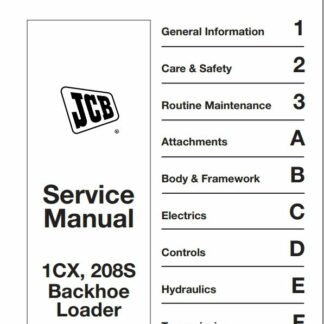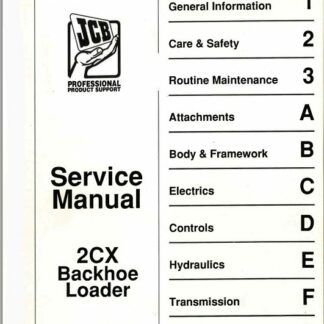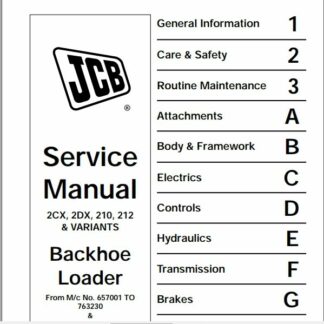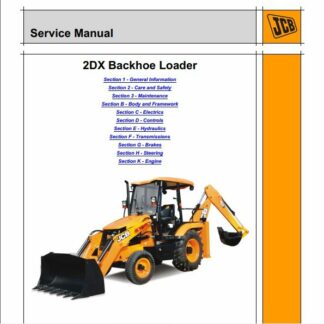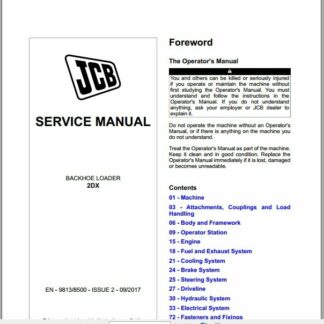
Doing your own service work on your JCB machinery can save you time and money, but it requires the right tools and knowledge. To do your own service work beyond basic oil changes, you need the JCB service manual. This article will explain what a JCB service manual is, the benefits of owning one, what is included in a manual, what is covered, how to prepare for service work, the essential tools needed, safety precautions, and how to complete your service work with a JCB service manual.
Understanding JCB Service Manuals
A JCB service manual is a collection of detailed instructions and technical specifications for the maintenance, repair, and servicing of JCB machinery. The manual provides the necessary information to diagnose and repair the machinery, as well as to maintain it in peak condition. The manual is typically organized into sections, each covering a specific topic.
The Benefits of Owning a JCB Service Manual
Owning a JCB service manual is beneficial for anyone who owns or operates JCB machinery. With a manual, you can diagnose and repair any issues that may arise with your machinery, as well as maintain it in peak condition. The manual also provides detailed technical specifications, so you can quickly identify and replace any faulty parts.
What is Included in a JCB Service Manual?
A JCB service manual includes detailed instructions on how to diagnose and repair any issues that may arise with the machinery. It also includes detailed technical specifications, such as engine type, oil type, and torque settings. Additionally, the manual includes detailed diagrams and illustrations, which can be used to help identify any faulty parts or components.
What is Covered in a JCB Service Manual?
A JCB service manual covers a wide range of topics, including engine maintenance, electrical systems, hydraulic systems, transmission systems, and cooling systems. It also covers topics such as preventive maintenance, troubleshooting techniques, and safety procedures.
Preparing to Do Your Own Service Work
Before attempting to do your own service work, it’s important to thoroughly read and understand the JCB service manual. Additionally, it’s important to have the appropriate tools and safety equipment on hand, such as safety glasses, gloves, and protective clothing.
Essential Tools for Service Work
When doing your own service work, it’s important to have the right tools on hand. This includes basic tools such as wrenches, screwdrivers, and pliers, as well as specialized tools such as torque wrenches and pressure gauges. It’s also important to have a copy of the JCB service manual on hand, as it can be used to help identify any faulty parts or components.
Necessary Safety Precautions
When doing your own service work, it’s important to take the necessary safety precautions. This includes wearing the appropriate safety equipment, such as safety glasses, gloves, and protective clothing. It’s also important to keep any tools or equipment away from moving parts, and to make sure that the machinery is properly grounded.
Completing Service Work with a JCB Service Manual
Once you have the necessary tools and safety equipment on hand, you can begin the service work. It’s important to follow the instructions in the JCB service manual closely, as this will ensure that the work is done correctly. Additionally, it’s important to make sure that all parts and components are properly installed and tightened, and that all safety procedures are followed.
In conclusion, a JCB service manual is essential for anyone who owns or operates JCB machinery. The manual provides detailed instructions and technical specifications for the maintenance, repair, and servicing of JCB machinery. Additionally, it’s important to have the appropriate tools and safety equipment on hand when doing your own service work. With the right tools and knowledge, you can complete your own service work with a JCB service manual. You can find JCB service manuals at https://jcb-manual.com.
